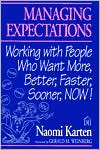Category Books
- Fiction Books & Literature
- Graphic Novels
- Horror
- Mystery & Crime
- Poetry
- Romance Books
- Science Fiction & Fantasy
- Thrillers
- Westerns
- Ages 0-2
- Ages 3-5
- Ages 6-8
- Ages 9-12
- Teens
- Children's Books
- African Americans
- Antiques & Collectibles
- Art, Architecture & Photography
- Bibles & Bible Studies
- Biography
- Business Books
- Christianity
- Computer Books & Technology Books
- Cookbooks, Food & Wine
- Crafts & Hobbies Books
- Education & Teaching
- Engineering
- Entertainment
- Foreign Languages
- Game Books
- Gay & Lesbian
- Health Books, Diet & Fitness Books
- History
- Home & Garden
- Humor Books
- Judaism & Judaica
- Law
- Medical Books
- New Age & Spirituality
- Nonfiction
- Parenting & Family
- Pets
- Philosophy
- Political Books & Current Events Books
- Psychology & Psychotherapy
- Reference
- Religion Books
- Science & Nature
- Self Improvement
- Sex & Relationships
- Social Sciences
- Sports & Adventure
- Study Guides & Test Prep
- Travel
- True Crime
- Weddings
- Women's Studies
Managing Expectations: Working with People Who Want More, Better, Faster, Sooner, Now! » (1st Edition)

Authors: Naomi Karten, Conrad Cooper
ISBN-13: 9780932633279, ISBN-10: 0932633277
Format: Paperback
Publisher: Dorset House Publishing
Date Published: January 1994
Edition: 1st Edition
Author Biography: Naomi Karten
Book Synopsis
People have expectations. Your clients, for example. Sometimes their expectations of you seem unreasonable. But sometimes your expectations of them seem just as unreasonable (in their eyes).
The problem is that these mismatched expectations can lead to misunderstandings, frayed nerves, and ruffled feathers. More seriously, they often lead to flawed systems, failed projects, and a drain on resources.
Yet how often do you openly acknowledge these differences in expectations and take steps to better manage them? And how often are you a victim of your own expectations of yourself?
Expectations are difficult to control and impossible to turn off. Naomi Karten offers concrete ways to manage them, and in the process, to dramatically improve the effectiveness of your services.
Booknews
The author is a speaker and seminar leader with experience in technical and customer support and management, and with a background in psychology. She interweaves anecdotes with spelled-out guidelines on such topics as guarding against conflicting messages, keeping jargon to a minimum, listening persuasively, gathering information, and understanding the customer's context. Annotation c. Book News, Inc., Portland, OR (booknews.com)
Table of Contents
Preface ..... xix
Introduction: The Expectations Challenge ..... 1
- The Expectations - Managing Framework ..... 2
- Communication ..... 2
Information Gathering ..... 2
Policies and Practices ..... 3
Formulating an Action Plan ..... 4
Getting Started ..... 5
Taking the Challenge ..... 6 - Communication ..... 2
Section 1: Communication ..... 9
1. Guard Against Conflicting Messages ..... 11
- Communicating Conflict ..... 12
Conflict #1: What You Promise vs. What You Do ..... 12
Conflict #2: What You Say You Won't Do vs. What You Do ..... 14
Conflict #3: What You Imply vs. What You Do ..... 16
Conflict#4: What You Say vs. How You Say It ..... 17
Conflict#5: What You Write vs. What You Mean ..... 19
Conflict #6: What You Say vs. What Else You Communicate ..... 20
Circumventing the Conflict ..... 22
Notes ..... 22
- Miscommunicating with Technical Terms ..... 24
- Muddling Messages ..... 24
Alienating Listeners ..... 25
Speaking Technobabble ..... 26
- Differing Definitions ..... 27
Ambiguous Statements ..... 30
Misguided Labels ..... 32
Code Words ..... 35
Jargon-Checking Kept in Perspective ..... 37 - Muddling Messages ..... 24
- Communicating Status Information ..... 39
- Nathan's Preference ..... 40
Building a Skyscraper ..... 41
Accommodating Differences in Preferences ..... 44
Gaining Consensus and Achieving Buy-In ..... 46
- A Technique for Building Consensus ..... 47
Notes ..... 49 - Nathan's Preference ..... 40
- Appearing Not to Listen ..... 51
- Dividing Your Attention ..... 51
Closing a Conversation ..... 52
Testing Your Tolerance ..... 52
- Eye Contact ..... 53
Responsive Behavior ..... 54
Moderation ..... 55
- Listen Before Drawing Conclusions ..... 56
Listen to Customers' Questions ..... 57
Listen for Statements of Expectations ..... 58
Speaking the Way You Listen ..... 59
Observing Cultural Differences ..... 60
Learning to Listen ..... 61
Notes ..... 61 - Dividing Your Attention ..... 51
Section 2: Information Gathering ..... 63
5. Help Customers Describe Their Needs ..... 65
- Analysis with Focal Points ..... 66
- Saying That's Not It ..... 66
Missing a Focal Point ..... 68
Types of Focal Points ..... 70
- Prototypes as Focal Points ..... 70
Service Requests as Focal Points ..... 71
Bargaining Chips as Focal Points ..... 72
Thinking with Focal Points ..... 73
- Finding More Focal Points ..... 74
- Saying That's Not It ..... 66
- Learn from a Model Skeptic ..... 78
Clarify Service Requests ..... 78
Challenge Your Assumptions ..... 79
Allow for Inaccuracy ..... 82
Pose Strategic Questions ..... 84
Learn to Think Like a Skeptic ..... 87
Notes ..... 88
- Categorize the Context ..... 89
- Consider All Factors ..... 90
Develop Your Own Questions ..... 92
Draw Conclusions from the Responses .... 93
- Group Brainstorming ..... 96
Unforeseen Interconnections ..... 96
- Questioning Strategies ..... 98
Talk-Inducing Topics
- Consider All Factors ..... 90
Subjects
 Marketing & Sales
Marketing & Sales  Customer Service
Customer ServiceComputer Books & Technology Books
 Programming
Programming  Software Engineering
Software EngineeringNonfiction
 Reference
Reference  Consumer Guides
Consumer Guides
